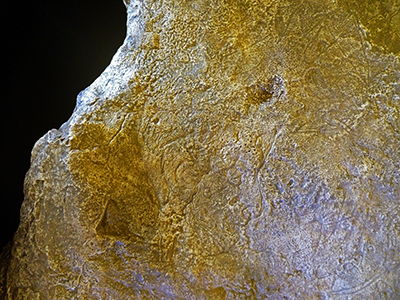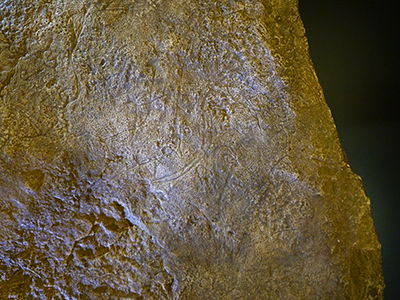Back to Don's Maps
 Back to Archaeological Sites
Back to Archaeological Sites
Grotte de la Marche
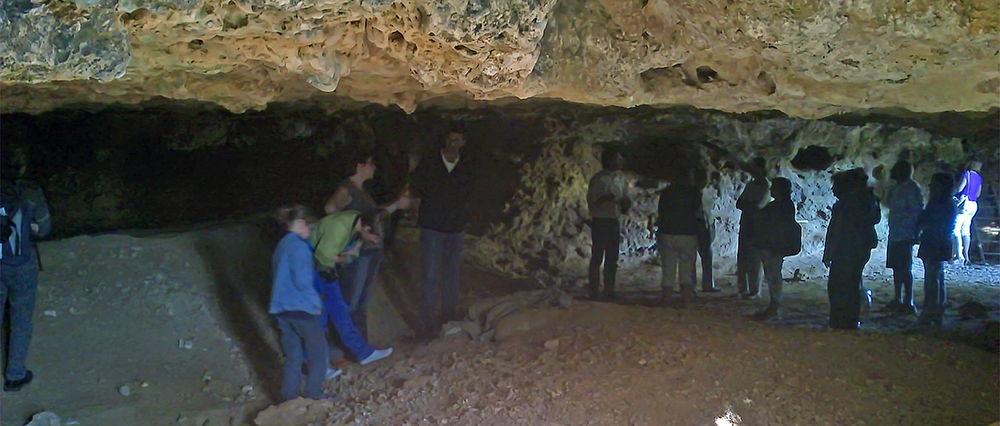
The Grotte de la Marche
Photo: Ebbblue, 2012
Permission: Creative Commons Attribution-Share Alike 3.0 Unported license.
Discovery and excavations at the cave of La Marche
The cave was first explored by H. Lavergne in 1914 who found some flint tools. He saw nothing exceptional and his 'excavations' stopped there.
In 1937, a local amateur, Léon Péricard, began excavations and uncovered engraved stones, ornamental remains and lithic and bone objects. With Stéphane Lwoff the excavation of the site went on for five years. During this period Abbé Breuil went there twice (1939 and 1940) to appraise the finds.
Text above: http://www.sciences-fictions-histoires.com/blog/archeologie/les-portraits-prehistoriques-de-la-grotte-de-la-marche.html#ZA6lXcv3j2WLu6vd.99

La Marche museum.
Photo: Ralph Frenken 2015
Source: Musee-de-Prehistoire-Grottes-de-la-Marche-et-des-Fadets
La Marche
Premier atelier de Magdalénien III à dalles gravées mobiles
Campagnes de fouilles 1937- 1938.
par Léon Péricard, et Stéphane Lwoff, S.
Péricard et Lwoff (1940)
Translation: Don Hitchcock
History of the discovery
The small number of known Magdalenian sites of the Vienne department had prompted a group of excavators from Lussac-les-Châteaux to methodically explore this region.
Amongst them were Raveau, already well known for his excavations in the Dordogne, Dr. Soueix, Leclerc and the authors of this paper.
The area of Lussac-les-Châteaux soon proved to be rich in the Magdalenian. After two years of research (the 1937-1938 campaign), four new deposits were detected within 4 kilometres of this city. On the advice of several residents, surveys were conducted. These brought Léon Péricard in November 1937 to explore the cave of La Marche which was soon to be revealed as a lithic deposit of the first order. He included Stéphane Lwoff in his excavations. The research continued for two months in 1938 and led to the conclusion that the cave of La Marche was an important archaeological site of engravings from the Magdalenian III, and became considered to be the earliest such deposit.
Geographical location
The valley called 'the river of the Petit Moulin' is oriented east-west. Its course is substantially parallel to the national road of Montmorillon in Lussac-les-Châteaux. It is an underground river, although it reappears on the surface at a point one kilometre from the village of Vaux, before the grotto of Foncerin, which is deep, but is of little known prehistoric value.
After running on the surface for a few metres, the stream plunges underground again for two kilometres, when it comes to the surface again in an artificial pond dating to the Middle Ages. Upstream of the pond, the creek flows past la grotte de l'Ermitage, which faces south, and is rich in remains from the upper Mousterian.
A few hundred metres below, at the approaches to the old piles of a drawbridge, is located la grotte des Fadets, also called Roche-aux-Puttes, which also faces south. This cave contained a few Solutrean remains but most was Magdalenian III material, fairly abundant, with similar technique to that of the industry of La Marche, including some rare engravings.
Finally, 500 metres, still on the north side of the valley, that is to say, facing south, we come across la grotte de La Marche, 200 metres beyond the downstream end of the artificial pond. At 10 metres above the water level of the river du Petit Moulin, la grotte de La Marche occupies a privileged position. In front of the cave, the ground has been made horizontal by a masonry retaining wall along the road of La Marche à la Barboterie. However originally it would have had a gentle slope leading to the river of Petit Moulin.
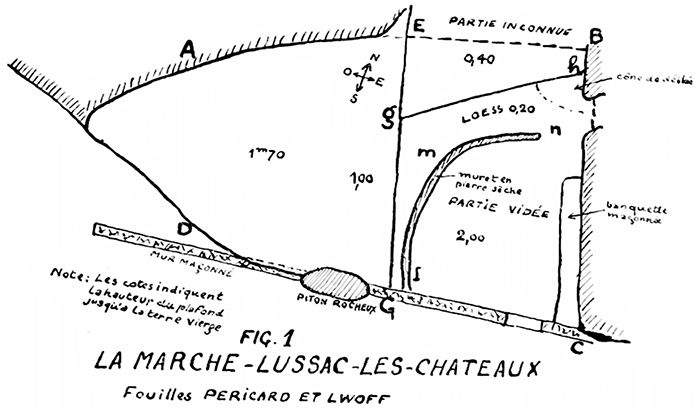
General plan of the cave.
The numbers indicate the height differential from the original soil level to the roof of the cave. The base rock, the level before human habitation, is 220 cm below the roof.
Photo: Péricard et Lwoff (1940)
The cave before and after excavation
La Marche is essentially in the shape of the rectangle shown in the diagram above of ABCD, of which only sides AB and BC support the roof. The point D is unsupported, and is thus 'cantilevered' out over the cave floor. A rocky outcrop is located at P. ( P is not shown on the diagram, but is presumably the 'piton rocheux' beside the point marked G - Don ) Part E В contains a number of sandy galleries. A masonry wall runs from D to C, from the roof to the ground, with an access door near C.
The cave was divided into two approximately equal parts by an earthen wall reaching to the roof and running from E to G. The surface EBCG belongs to Dr. Raymond Bezaguet and the AEGD surface to M. Bouchet.
The part excavated from 1937 to 1938 is limited to the surface GghС. Dimensions are hC= 18 m, CG = 9 m, Gg = 14 m. The ceiling of the cave, although containing many deep fissures, is substantially horizontal and is 220 cm on average above the base of the Magdalenian III layer.
Entering through the door, placed in the artificial wall along part DС, we arrive at a flat floor, probably artificially drained. The height of this part of the cave is 2 metres. It essentially formed a rounded rectangle of 6 by 12 metres. A dry stone wall 60 cm high, along the line lmn and finishing in the northeast corner, on a debris talus slope or cone rising to the ceiling and covered with slabs and boulders of shapeless limestone. From that cone and almost to the entrance, the east side is bordered by a masonry bench, rising to 40 cm above the artificial floor and with an average width of 140 cm. The dry stone wall lmn, retains the embankment of loess or unstratified silt which was 180 cm high, and which filled the remainder of the cave owned by Dr Bezaguet.
An average space of 20 cm was left between the roof and the top of the embankment. This is how the cave looked before the beginning of work. It would have served originally as a greenhouse for plants sensitive to cold, and later a wine cellar. According to a story told in 1908 by M. Savart, at that time 80 years old, this cave 'would have served as a place for the druids to administer justice.' No datable remains are post Magdalenian VI. The excavations in 1937 and 1938, have enlarged the cellar; currently the drained surface substantially corresponds to a trapezoidal space with parallel sides of 18 metres and 14 metres in length, 9 metres apart.
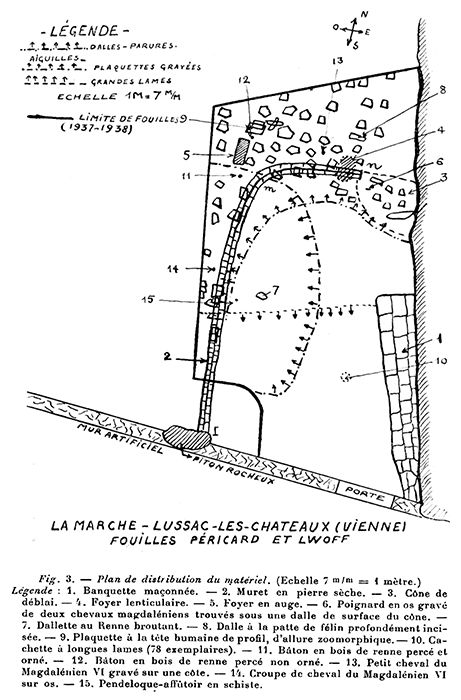
Plan of the distribution of the deposits at the site.
1 Masonry bench seat.
2 Small wall in dry stone.
3 Cone of excavated material.
4 Lenticular hearth.
5 Trough shaped hearth.
6 Bone dagger engraved with two Magdalenian horses found under a slab at the surface of the cone.
7 Thin slab engraved with a grazing reindeer.
8 Slab with a deeply incised feline paw.
9 Plaquette with a human head in profile.
10 Stash of long blades (78 examples).
11 Pierced, decorated baton in reindeer antler.
12 Pierced, undecorated baton in reindeer antler.
13 Small horse from the Magdalenian VI engraved on one side.
14 Croup of a horse from the Magdalenian VI on bone.
15 Pendant used for abrasion, in schist.
Photo and text: Péricard et Lwoff (1940)
Stratigraphy
The first part to be excavated is limited by the inner wall. In this part we find, with an average thickness of 15cm and immediately underfoot, a lithic and bone material with finely engraved plates from the Magdalenian III. In places, deeper pockets of 30 to 70 cm are veritable caches of flint, dug exclusively to conserve dozens of high quality tools. The blackish archaeological layer does not, in this part, have areas with large amounts of detrital accumulation.
Under this layer, there is a dark yellow silt, associated with limestone blocks, probably detached from the roof, having undergone the beginning of concretion by the agglutination of sand and clay. This archaeological layer is of substantially constant thickness except at the location of the previously described caches, with few of these elsewhere.
Sondages of 1 metre in depth showed no other archaeological layer, but uncovered the same clay strewn with rubble and boulders. The homogeneity of the layer and its horizontal position led us to take this base as the current excavation floor. It seemed better to do so, unlike other techniques, in particular that of cleaning to bedrock, a technique that will, however, follow after the total excavation of the Magdalenian III.
Note that this section contains no large engraved plaquettes. On the other hand, the dry stone wall contains some at its base, and the latter have not been displaced. Thus we must unfortunately conclude that the archaeological layer was partially excavated and the slabs tossed out, either outside the cave or put into the earth wall separating the two properties, or possibly to form the masonry side bench. This hypothesis remains to be verified. The earth wall dividing the cave into two parts was razed. In the material from this wall flint pieces were found, but only one part of the wall contained some non-etched slabs. This part was emptied once we were satisfied with its composition, because, on the eastern vertical walls, there is a very pronounced gap up to 160 cm in height resulting from continuous seepage. This hypothesis is, moreover, confirmed by the locals, if any credit may be granted to such information.
Note that the archaeological layer disappears along the eastern bench seat over a width of 100 to 150 cm, but it reappears immediately after the seat in the vicinity of the talus slope or cone containing on its surface many slabs and blocks, amongst which was a chamfered panel with a champlevé ( an engraving with the material around the outline removed to simulate a bas relief - Don ) representing a bovid on one side and some engravings on the other. In this cone, and under a surface slab was found a big bevelled bone, with a representation of two small magdalenian horses, of the Magdalenian VI style, with bristling manes.
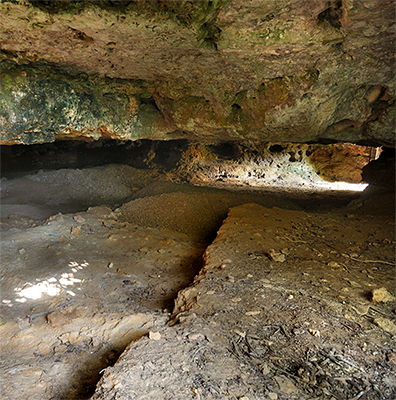
The interior of the cave today.
Photo: http://www.tourisme-vienne.com/fr/activite/879/les-grottes-de-la-marche-et-des-fadets
Section buried in sand
The Magdalenian III layer extends, in this part, still in the same stratigraphic conditions, but in an extremely weathered layer, into the Magdalenian V and VI, a double layer of 20 cm - 10 cm thickness, characterised by a thin grey strip in some places only. It is able to be followed very easily in the rest of the yellowish silt filling.
This layer contains very little flint, and that with poor technique. The bone industry is represented by three fragments of decorated baguettes 5 cm long, with geometric designs and traces of red and light blue paint.
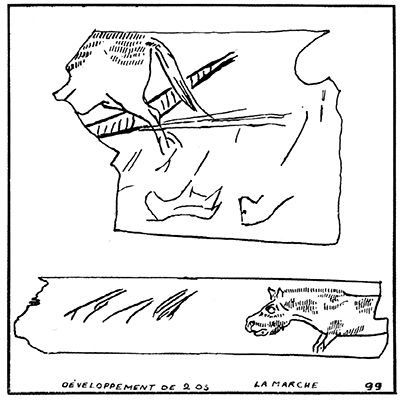
Of animal bone carvings there were only two specimens, one representing the hindquarters of a horse (above) and two small horses, the other (below) a remarkable little typical horse with smudged lines of red ochre. These two bones were broken by fairly large boulders detached from the roof, after or during the habitation of the cave during this period.
Photo and text: Péricard et Lwoff (1940)
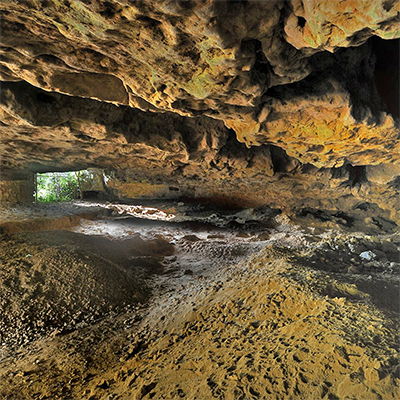
Another view of the interior of the cave.
Photo: https://www.facebook.com/museedeprehistoiredelussacleschateaux/
The Magdalenian III layer contains two hearths, 4 and 5 (Fig. 3). These fireplaces have at their base a few tools. Their thickness consists of calcined bones or bones reduced to very fine particles. Fireplace 4 (Fig. 3) with an average thickness of 50 cm is lenticular. It has been artificially widened and its centre is 20 cm below the general level of the deposit.
The mean diameter of this hearth is 120 cm. Fireplace 5 (Fig. 3) contains a bone mixture of the same nature, but it offers the peculiarity of being absolutely rectangular (100 cm x 60 cm). The bottom of the trough is horizontal and is 12 cm below the general level of the deposit.
The edges are slightly rounded. The east side of the edge of the fireplace is made of soft limestone blocks fallen from the vault, amalgamated by cooking with the edge of the hearth. This limestone edge is engraved on part of its circumference (approximately 20 cm). The height of the bone ash does not substantially exceed the top edge of the trough. There are more tools around the hearths than elsewhere.
Importance of the material collected during the 1938 excavation campaign
1. Equipment for grinding grains - two keeled pestles or grindstones of indurated shale, 60 cm in length. Six grinders or mortars of quartz and granite river pebbles, 50 pebbles were also found to have similar frictional wear.
2. Limestone tiles and engraved plaquettes - 33 engraved stones (there were 200 by the end of 1940). The largest was 100 cm by 60 cm, the average was about 40 x 40 cm. There were 60 engraved plaquettes, and one engraved river stone.
3) Bones and deer antler artefacts: - 50 spearheads with a single bevel, short and long with grooves; six needles with eyes, large and small, round or flat; 30 bipoint spindle shaped spearheads; 12 lissoirs, smoothers, made of bone; 30 pierced teeth; 31 horses incisors decorated on their inner face, in a triangular grid; 5 pierced and notched hyoid bones; 10 pierced shells; 6 necklace beads (one is in amber containing a fossil and the rest are in bone and ivory); 2 pendants of pierced sharpening stones, in schist; 1 trapezoidal undrilled sharpening stone in schist; 2 bâtons percés; 10 tools of indeterminate shape and nature; 2 notched bone pendants.
4) Silex - Microlith material. - More than 500 whole pieces, among which there are chisels, awls, scrapers, polyhedral planes, parrot's beak chisels (an emerging technique), nuclei. Microlith material. - Very many backed blades, retouched blades, burins of very small dimensions, and burins worked from flakes.
Siliceous Tools
Fabrication tools.
1 Grindstones and grinders. - Grindstones and the grinders themselves are river pebbles. The grinders have almost constant dimensions of 12cm. These are elliptical, flat or round river pebbles with quite pronounced traces of wear. Some of these grinders are baked by fire and are crumbling. Grindstones are of larger dimensions and can be up to 40 cm in diameter. They bear traces of red and yellow ochre. The wear in the centre is very clear. The number of grindstones is quite low, relative to the number of grinders.
2. Hammers. - They are relatively rare, but some pebbles bear traces of percussion at their ends. They generally have the shape of a parallelepiped with a square section whose rounded ends bear traces of hammering.
3. retouchers. - Retouchers are in limestone. Ellipsoidal, they are easily grippable. Rounded on one edge, they have a relatively sharp angle on the other side, showing fairly regular retouching like those of flint. They are frequently very finely and very artistically engraved with animal motifs.
Flint tools.
Raw material: The flint was imported, although some nodules of a very bad greyish flint exist in the limestone walls of the cave. All the most beautiful varieties are represented, from pale transparent flint to the mottled yellow banded flint and jasper of the Fontmore type.
In the upper layers of the Magdalenian V and VI, we found a weathered white matter, very light, resembling porcelain. It is the product of the cacholonnage ( hydration/opalisation producing a milky white opaque result, the gemstone form is called cacholong - Don ) of a translucent pale flint, which exists in abundance in a quite large Magdalenian VI deposit located 4 km away. However, most of the material is light yellow flint, slightly translucent. Only one example is of black flint.
Cores. - Cores are not very abundant. They are prismatic and have several faces, or they have the shape of a pyramid with several convex faces. The base is usually very flat; it is oblique in polyhedral rabots ( a type of push plane - Don ).
Chisels, scrapers, awls. - The amount of waste is almost nonexistent, but the proportion of unfinished tools, that is to say, not retouched, is quite important: it can be assumed that they represent a third of extracted material. Knives were made, on average, 8cm long, and they are very numerous. The retouch to create a Noailles burin is very rare. Scrapers on blunt blades are also very numerous. They are 5 cm to 6 cm in length, and the other end has a clean break. In some large pieces (from 15 to 25 cm), the scraper is associated with the other end being made into a burin, an awl, or a straight or curved knife. Awls, of smaller dimensions than the scrapers, exhibit sharp breaks on the other end. These are often longer pieces; there are doubles. The awl is also associated with the burin.
Blades. - The blades are associated with tools on the end, but there is a type of blades, very sharp on one side, with a constriction in the middle and without retouch. These blades thus form large double knives (up to 18 cm). They seem to result from a special technical removal from the nucleus.
Microblades. - Microblades can be divided into quite numerous backed blades , very small chisels and blades, retouched or not.
Art engravings on stone. - The abundance of Magdalenian III engravings is one of the essential characteristics of the deposit. All these very large and homogeneous engravings, are exceptional documentation for the knowledge of the art of this period.
a) mobile engraved slabs. - These are what give the deposit originality. These Magdalenian III tiles are based on or in the archaeological layer, dated to the same time. They are movable. Their dimensions and their forms are varied, being rectangular or trapezoidal. They were not attached to the wall or the ceiling of the cave; they are hard limestone and they have certainly been brought from some distance away.
In general, they have on their sides sharp breaks with sharp corners, but some of them are completed by artificial rounding on one, two or three sides. Others have been worked on all four sides and have either a rounded or a 45° chamfer Their average thickness is 12 cm, their mean length and width are of the order of 40 cm. Some of them can be connected to form a set whose maximum dimensions are 100 cm by 60 cm.
Their faces are flat and smooth usually on only one side; the other face is flat with raised 'pimples', although quite smooth otherwise. Some show signs of wear on the etched portion, wear which seems to have occurred slowly by friction, and which reveals the rubbed part compared with the rest of the engraving where there is a gradual deepening of the engraved lines.
Others are covered with a layer of limestone deposited by the infiltration of lime laden water, where one can distinguish, in places, that there are underlying lines. Their position in the layer varies. Most are simply placed on the layer horizontally. Etchings are sometimes on one side of the layer, sometimes the opposite side, but some are slightly inclined at an angle not exceeding 30° to 40°. The engraving is always on one side only of the slab.

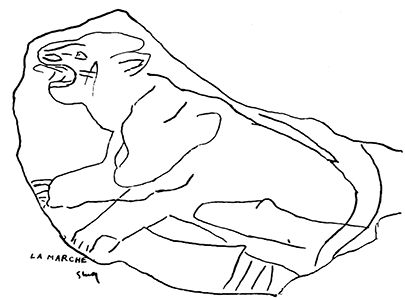
Growling feline.
Photo and text: Péricard et Lwoff (1940)
The characters of the engravings are: Shallow lines finely engraved, representing heads, bodies, and legs of animals. There are superimposed prints, and entangled lines. Decryption will be long and difficult. There are some specific characteristics.
One of them was broken into three rectangular parts, with no visible traces of hammering. These three parts are substantially of equal dimensions, the exact joining of which allowed the emergence of the complete engraving. These three blocks could be connected exactly, and had three rounded sides, the fourth side was a clean break that could be extended by a fourth piece found not far away.
Another was inclined at 40°; its upper face was covered by an archaeological layer of 10 cm thick, containing various tools and consisted of a plate engraved with a human bust in profile, done in light relief; it is the only piece showing a single figure. The whole was covered with another engraved slab with substantially the same dimension. Near this group was found a bâton percé of reindeer antler remarkably decorated.

Head from la Marche. The striations on the cheeks of this human face may well be scarification marks.
This engraving is sometimes known as le Sorcier de La Marche.
Photo: Don Hitchcock 2015
Source: Original, Musée d'Archeologie Nationale et Domaine, St-Germain-en-Laye
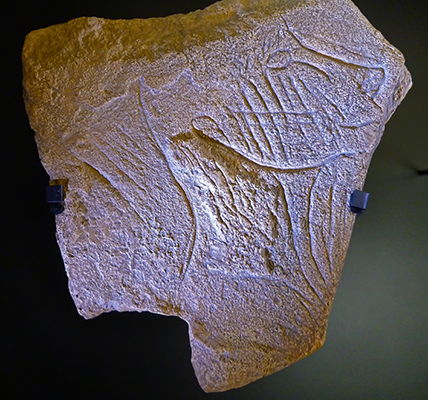

Head from la Marche.
Photo (left): Ralph Frenken 2015
Source: Facsimile, Musee-de-Prehistoire-Grottes-de-la-Marche-et-des-Fadets
Photo (right): S. Lwoff
Source: Péricard et Lwoff (1940)
The cone of rubble to the east near the seat was covering the surface of slabs, as well as shapeless blocks which were probably removed from the excavated part. One of these slabs had a 45° chamfer, almost square (50 cm x 40 cm) and carried engravings partly erased on the same side of the chamfer, an, on the opposite side, a representation of a bovid done with a light champlevé ( an engraving with the material around the outline removed to simulate a bas relief - Don ).
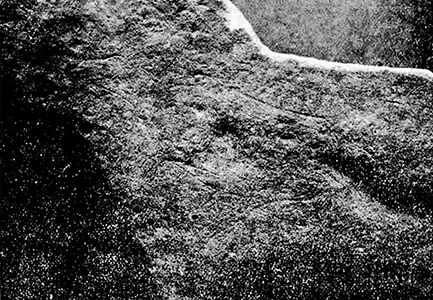
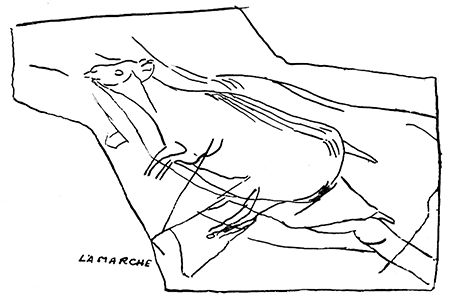
Deer.
Photo and text: Péricard et Lwoff (1940)

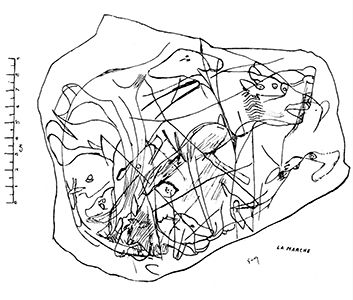
Engraved limestone slab. We recognise a beautiful reindeer grazing; one or more bears, the head of a bison, an ibex head, an elephant leg with its hooves, and heads of different animals more or less begun.
This plaquette is called 'The grazing reindeer of La Marche'.
Photo and text: Péricard et Lwoff (1940)
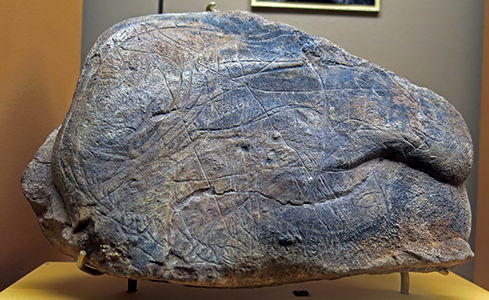
Reindeer and bear on a limestone slab as above, called 'The grazing reindeer of La Marche'.
Photo: Don Hitchcock 2015
Source: Original, Musée d'Archeologie Nationale et Domaine, St-Germain-en-Laye
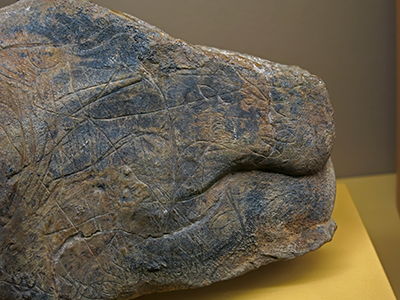
Bear on the limestone slab from la Marche, closeup of the slab above.
Photo: Don Hitchcock 2015
Source: Original, Musée d'Archeologie Nationale et Domaine, St-Germain-en-Laye
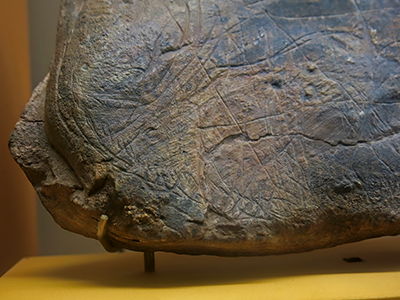
Grazing reindeer on the limestone slab from la Marche, closeup of the slab above.
Photo: Don Hitchcock 2015
Source: Original, Musée d'Archeologie Nationale et Domaine, St-Germain-en-Laye
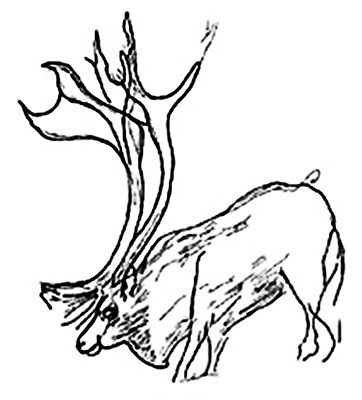
Drawing of the grazing reindeer.
Photo: http://rupestre.on-rev.com/page156/files/ec0e930b9038cae6ba5bd3b1822417c7-101.php
Finally we can note an interesting bas-relief of a foreleg of a feline. In a prismatic block lying on the layer, an attempt was made to release by a series of long and deep scratching a leg dislocated from the shoulder.
b) Engraved plaquettes. - This latter material is accompanied by a series of small limestone slabs whose dimensions are approximately the size of a hand (eg Figures 4, 4a, 5, 5a, 6, 6a). Sixty were found. The quality of the design and especially of the engraving are generally higher than those of the large limestone slabs.
These plates reproduce:
1 Animals (whole animals, heads, rumps with legs), with predominance of Reindeer and Horses, as well as a few Ibex, Bear (Fig 6 and 12.).
2. Human figures with sartorial detail which seems a particularly rich deposit (example in Figure 4).
There are some bodies, heads shown from the front and the side, sometimes mating, and sexual organs.
c) Engraved river pebbles. - It is certain that some traces of engraving, exist on river pebbles, however careful examination is necessary to detect them. Abbé Breuil has also noted on a large river stone an engraving of the head of a Reindeer.
Shaped material of animal origin. - This material, very well represented, dates the deposit indisputably as Magdalenian III. However, a Reindeer antler fragment, loop shaped, found in La Marche, is similar to several fragments from Placard classified Magdalenian II, and others from the Magdalenian III (when looking at the display cases of the Museum of National Antiquities at St. Germain-en-Laye). We will quickly review the material.
Engraved horses teeth. - These characterise the deposit. Incisors carry, on the top of their inner surface, a triangular grid more or less well represented. One of the bases is the edge of tooth wear: the other two sides are limited by only one or two sometimes crudely represented lines.
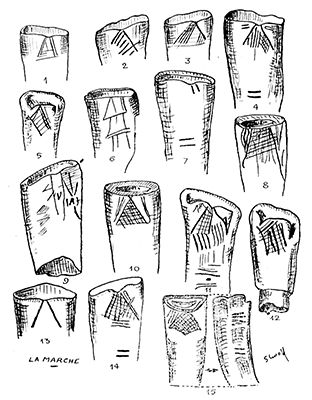
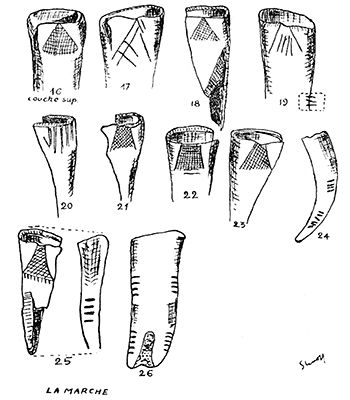
Engraved horse incisors.
Notice that the shape of the engraving is not always a triangle.
Photo and text: Péricard et Lwoff (1940)
They are substantially symmetrical with respect to the axis of the tooth. The filling of the area, if any, is made of a fairly regular grid. The teeth are always isolated from the maxilla, they are not still attached to the jaw.
This tectiforme sign (?) Is accompanied, sometimes, by one or more fairly deep notches, parallel to the wear edge and situated at mid-height on the sides of the root. These notches are symmetrical and are on the edges. One of them has in the middle portion of the tooth and on the same inner face a cruciform sign (it is not drawn on our illustration).
It is useless to speculate on these objects. Teeth of the kind we have just described have been rarely reported. Abbé Breuil told us of a Laugerie Basse one from the National Collection, and he found one at la grotte des Fadets de Lussac-les-Châteaux. Rousseau (1933) has reported the presence of 8 similar teeth in the deposit of Dousse (Angles-sur-l'Anglin) relatively close to La Marche, and even at the same archaeological level. La Marche has provided 31 similar teeth, which increased to 50 during later excavations. If we accept that the law that the number gives the place of origin, we may be tempted to consider La Marche as the source for the diffusion of these objects.
b) drilled and nicked bone pendants . - La Marche provided two bone pendants, pierced and nicked, identical to those described previously by Dr. Gobillot in this bulletin and found at Fadets, the cave already quoted at the beginning of this article. They seem by their shapes to be locally made objects. c) hyoid bones drilled and nicked. - Five hyoid bones, pierced and nicked on their edges, probably part of a necklace, they were found together in the back of the cave.
d) Eyed needles - Two types of needles which seem to be characteristic of the deposit. One of them is an eyed needle, cylindrical, straight to the tapered tip. The other type is made of a flat splinter 3 or 4 mm in width, with a hole on the flat and at its end. The bone is curved in the manner of mattress makers' needles, but the point was never found. Is it indeed a needle or simply a bone that was used as part of a necklace?
e) Spear Tips. - About 50 spearpoints, all of reindeer antler, were found. They are of the conventional type, with either a single bevel, double bevel, or simple annular groove. The short spear points seem older than the long ones, according to their stratigraphic position. Their dimensions vary from 5 to 15 cm.
f) Awls. - The number of awls or poinçons tallied 30, either single or double. The single ones are remarkable for their finish and execution. Some have a base which can be grasped easily, the end of the long bone, modified, was modified for this purpose. Finally, there are some long awls, spindle shaped and doubles, which must have been used for different purposes than the ones previously described.
g) Spatulas or lissoirs, smoothers - these are fashioned from rib bones, carefully polished. They are twelve in number.
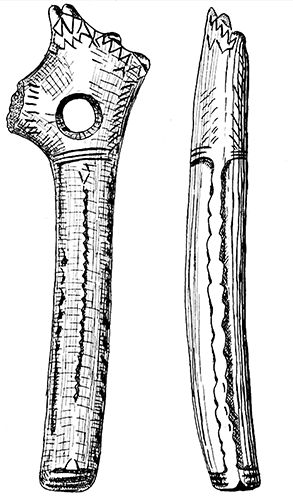

h) Bâtons percés - two of these were found. The first is not engraved, but the second (left ), on the contrary, is remarkably decorated with geometric engravings.
Two embossed corrugations run along the shank and multiple incisions decorate the two half cylinders thus formed. One short extension, located near the hole, could represent the head of an animal.
But the end of the baton is an obvious novelty and could be used to some extent to explain the purpose of this piece. It shows three circular incisions with beads, and where is drilled quite a strong longitudinal notch begins at the edge of the bowl-shaped socket.
It may be a phallic representation with the end of the penis shown. The object could be used for circumcision, the tip of the foreskin being introduced into the hole, with the foreskin easily cut off. This could explain the elliptical shape of some holes in pierced batons as well.
Photo (left) and text: Péricard et Lwoff (1940)
Photo (right): http://www.hominides.com/html/dossiers/baton-perce.php
i) Teeth pierced to be used as pendants - Thirty drilled teeth were extracted from the cave. Some of them are nicked. These are Bovine incisors.
j)Shellfish - Among the material of this type, we can report a Saint-Jacques shell whose hollow part might have been used as a container or spoon. Indeed, close to its hinge and parallel, there is a stroke of a burin that pierced the shell and that could serve as a point of attachment for a handle.
Even now some people, such as the Bretons, use these shells fitted to serve as a ladle, even sailors coming to port visiting La Trinité-sur-Mer (Morbihan), in the last few years! The owner's name or initials are carved on the wooden handle. (Note from M. Guenin)
The operculum of the same shell was cut into a triangle, with traces of red ochre and moreover the shell itself. Small shells, including Cerithiidae were pierced with a round hole.
k) necklace beads. - They are bone, except one of them in fossil amber. This bead has the size of a marble.
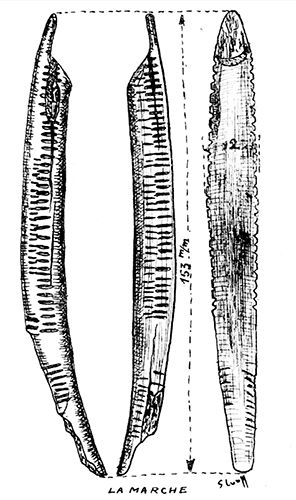
l) Various tools. - Among the less conventional objects, bone baguettes may be mentioned, of substantially square cross section, bevelled at one end. These tools must have acted as rammers. The tools were made from a rib. Its cross section is square and its end has been thinned so as to form a triangular tip.The body of the tool is notched regularly, by many blows of burins, in three rows running from one end to the other of the shaft. Large reindeer antler or ivory baguettes were, however, regularly rounded.
Photo and text: Péricard et Lwoff (1940)
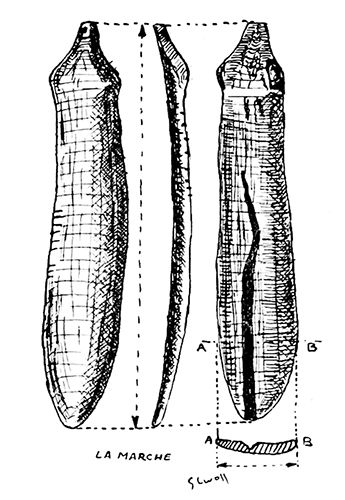
Finally we indicate a curious tool. It is complete and has been found in a hole, of small diameter, in a large unengraved limestone slab in the archaeological layer. It is a tool of 5 to 6 cm, flat, presenting the appearance of a mustard spatula, but whose extreme development is triangular The inner part of the spatula is traversed by a groove, slightly curved. The point of such a tool was also found during these excavations.
Photo and text: Péricard et Lwoff (1940)

m) Tool handle for a flint awl - One of us has found a pale flint awl, in close juxtaposition with an arched bone fragment, very grippable and terminated by a point. The fitted section of the broken bone was in contact with the tool. We thought it could have been used as an attachment for the awl. Indeed, we found that after binding of the tool on the handle with a piece of raffia, it was very well suited. The bone point, which differs from that of the awl, avoids a cut hand in case of breakage. The bone tip can also be used as an awl.
A. and B. elevation and profile.
D. Flint Awl.
E. Posterior view of the bony housing receiving the flint.
Photo and text: Péricard et Lwoff (1940)
E. Distribution of material on the habitat area - The distribution of the material in different areas of the cave can provide insight on the settlement pattern of its various parts. Weapons, or pieces presumed as such are more numerous at the entrance of the cave; household utensils or ornaments such as needles, pendants, lamps, beads are concentrated at the back of the cave, mainly around the hearths.
The back part of the cave also contained the greater part of the engraved stones. From this point of view, the material can be divided into two groups:
a) Material of equal density in all parts of the cave;
b) equipment located at certain points of the search area.
a) This material consists of blade scrapers, double and single burins, single bevel spears, engraved horse teeth, engraved plaquettes.
b) The only completely sterile surfaces are a narrow strip of the cave floor running along the seat and whose width does not exceed 150 cm, and a quarter circle limited by the entrance wall and the dry stone wall, having approximately 2 metres radius.
The whole part excavated near the door, contains scrapers on blades with the largest dimension of about 20 cm and large lanceolate blades. The part adjacent to the seat, with the exception of the sterile part, contained a larger quantity. A concealed cache of about 70 cm contained 78 examples.
The density of these blades decreases eastwards. They are unique to the back of the cave. Near the wall, 5 metres from the artificial wall we come to a workshop. It is in a 30 cm deep depression and the material is cacholonné, (whitened and made opaque by weathering) since it was so long exposed to the air, while the Magdalenian III material immediately above, which is not so deteriorated, was more quickly covered. This is a flake industry, but large blades which one finds there also are lanceolate and leaf shaped. Fine retouches exist on two symmetrical sides. The pierced pendant-abraders come from this level. Their character, which is reminiscent of the Aurignacian, could fool a beginner into thinking that they are of this age.
This workshop has two anvils or keeled millstones with the keel dug into the ground, the upper surface bearing traces of polishing. Two limestone pieces which are naturally cupshaped, could have been used as lamps. This relatively small area has no trace of engravings, while the engraved plates exist at the top level.
Now we examine the silted part. Beads were encountered at the beginning of a clogged gallery, located immediately beside the big cone of debris and nowhere else. The eye needles, pendants, and awls were found near the fireplace 4. A lamp fragment of sandstone carrying radiating grooves on its upper flange, as well as a hard sandstone block with a flat lower surface in the shape of a semi-cylinder with parallel grooves in the convex part were found in this region.
The main area where engraved stones were found was located in the back part of the cave, in a tight network. Can we admit that these tiles formed a set of seats? This hypothesis is sustainable in our opinion. Some of them affected the form of stools without legs, fairly regular round shapes. The wear of some was not simply that of water but that of man-made wear. Moreover, the presence in this region of important material found, confirms that the inhabitants stayed and worked there for long times.
If it were pure art, these slabs would have been arranged quite differently. The presence of a bâton percé at the geometric centre of the cave, with one of the large human representations nearby, tends to prove that we are in the presence of an organised tribe. Perhaps it was an art school to train students, and from there the teaching of the masters spread far and wide, as at the site of la Dousse, located about forty kilometres from Lussac-les-Châteaux.
Conclusions
During the 1938 excavation campaign, la Marche has emerged as a very homogeneous deposit of Magdalenian III, both in terms of its tools and by its works of art, characterised primarily by its mobile engraved slabs. The relative poverty of the department of Vienne in the final Paleolithic no longer applies. During the excavations in the area of Lussac-les-Çhâteaux, it was shown instead that this region was inhabited by a true Magdalenian population from the initial to the final Magdalenian. It will be necessary to extend this research out of the narrow area to which it has been confined. The systematic exploration of the deeper parts of the cave may reveal paintings.We should finally address to Dr. Rajanond Bezaguet, and to M. Bouchet, our very sincere thanks for allowing us to explore this very interesting area. Abbé Breuil, Member of the Institute and the Museum of National Antiquities, including Mr. Lantier, Chief Curator of the Museum of National Antiquities, the master of one of us in archeology, kindly showed interest in our searches and provide us with helpful advice. They find here the expression of our gratitude. A second summary of our research will be made in this Bulletin during the 1939 campaign.
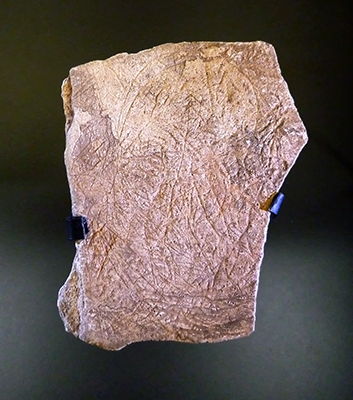
The old man of La Marche.
Photo: Ralph Frenken 2015
Source: Musee-de-Prehistoire-Grottes-de-la-Marche-et-des-Fadets
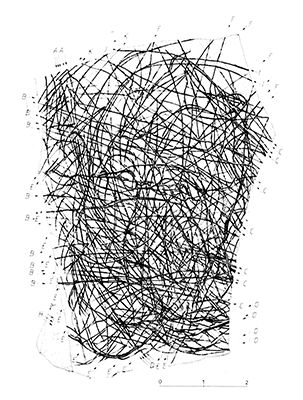
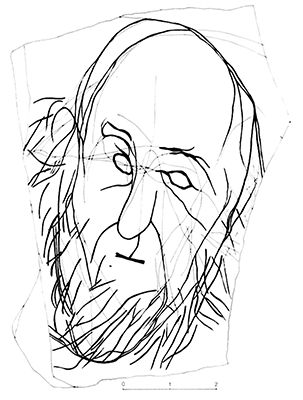
The old man of La Marche.
Photo: Airvaux et Pradel (1984)
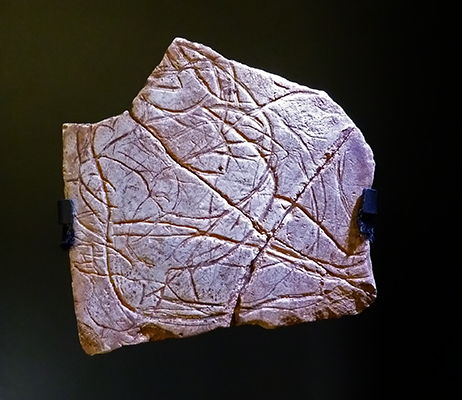
Seated woman.
Height 6 cm.
This shows an obese woman. Among the platelets we were able to recognise other similar representations. This woman is sitting on the ground naked, she wears shoes or leg bracelets and a half-belt possibly used to suspend a loincloth. The arm is in the raised position. The outlines of some invisible parts are represented as if seen through. Thus are shown one of the breasts, the internal line of the legs in their path under the belly, a line which indicates the position of the vulva. This woman is on a fractured plaquette partially reconstructed.
Photo: Ralph Frenken 2015
Source: Musee-de-Prehistoire-Grottes-de-la-Marche-et-des-Fadets
Text: Lwoff (1941)
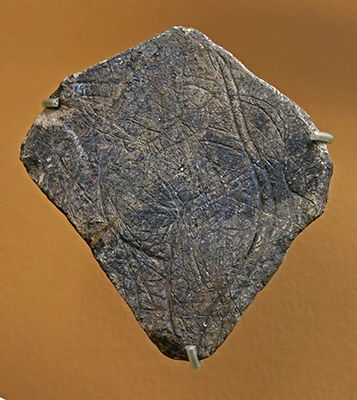
Woman.
Photo: Don Hitchcock 2015
Source: Original, Musée d'Archeologie Nationale et Domaine, St-Germain-en-Laye

This has been identified on the museum label as a human face, but it looks much more like an owl, with the body shown in left profile, and an outline of the left wing.
Photo: Don Hitchcock 2014
Source: Original, Musée d'Archeologie Nationale et Domaine, St-Germain-en-Laye

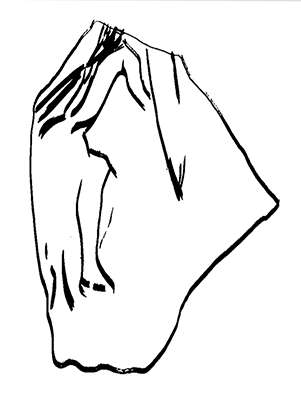
Grotte des Fadets, engraved stone fragment of a human, the head of which has disappeared.
The slender body is moving, and there is long hair down to the buttocks. The right arm is projected forward towards an almond shape, representing perhaps a bow.
Photo: Ralph Frenken 2015
Source and text: Musee-de-Prehistoire-Grottes-de-la-Marche-et-des-Fadets
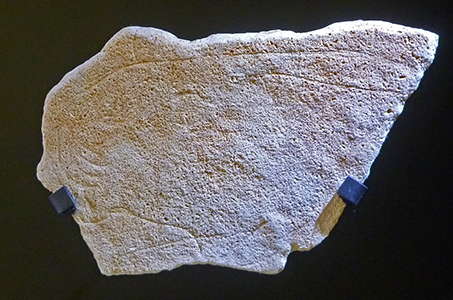
Small limestone engraving of the head of a feline, probably a lion, from La Marche.
Photo: Ralph Frenken 2015
Source and text: Musee-de-Prehistoire-Grottes-de-la-Marche-et-des-Fadets

Limestone eroded in its upper part, but engraved with three horses on the lower section. In the centre is a lone horse, probably a pregnant mare, seeming to drink or graze. The proportions and anatomical details of the animal are respected. It has an abundant mane, a tuft of hair on the withers, and a long bushy tail.
To the right of this animal emerges the head of another horse. On the left, one can see another horse, shown vertically.
Photo: Ralph Frenken 2015
Source and text: Musee-de-Prehistoire-Grottes-de-la-Marche-et-des-Fadets
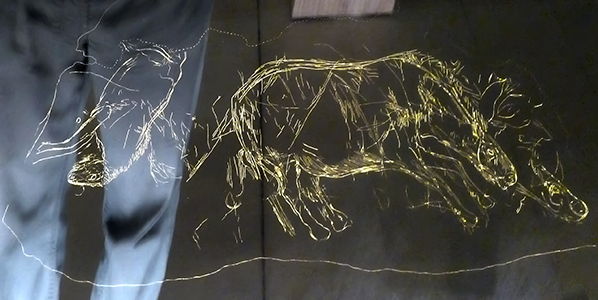
Drawing of the engravings on the block above.
Photo: Ralph Frenken 2015
Source: Musee-de-Prehistoire-Grottes-de-la-Marche-et-des-Fadets
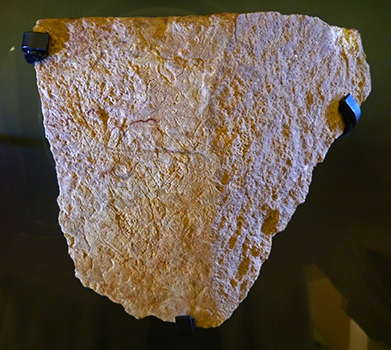
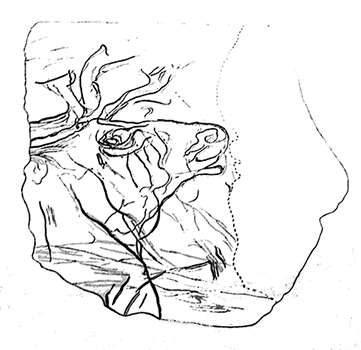
Engraved limestone fragment of a reindeer head looking to the right, from La Marche.
The anatomical anatomical details are of great fidelity despite the absence of ears. Shown are the muzzle, the open mouth, a nostril, globular eye, antlers ...
Photo: Ralph Frenken 2015
Source and text: Musee-de-Prehistoire-Grottes-de-la-Marche-et-des-Fadets

Engraved limestone plaque of two male figures from La Marche. On the left, a naked man is standing, arms raised, head turned to the right. His body is well proportioned and his penis is detailed. His head is well groomed: he has short hair, a bulging forehead, aquiline nose, mouth ajar, a rounded receding chin, an almond-shaped eye, an ear, a well formed beard.
To the right, another man appears kneeling, head bent forward, arms outstretched before him. His bald head is detailed and shows a goatee. The significance of this scene remains enigmatic - is it a dance, perhaps, or a ritual?
Photo: Ralph Frenken 2015
Source and text: Musee-de-Prehistoire-Grottes-de-la-Marche-et-des-Fadets

La Marche.
Photo: Ralph Frenken 2015
Source: Musee-de-Prehistoire-Grottes-de-la-Marche-et-des-Fadets
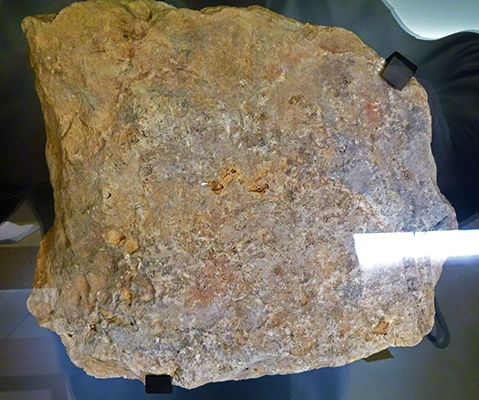
La Marche.
Photo: Ralph Frenken 2015
Source: Musee-de-Prehistoire-Grottes-de-la-Marche-et-des-Fadets

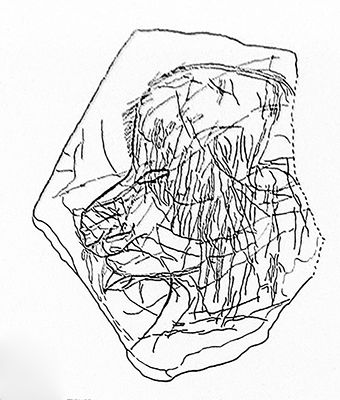
La Marche.
Engraved limestone fragment of a human head, in profile and facing left.
Abundant hair, finely drawn, falls on the face masking the ear and part of the cheek and encroaching on the almond shaped eye, deeply engraved. The nose is strong and arched, and the chin is sharp and convex. The line of the jaw is well indicated, as is that of the neck.
Photo: http://www.poitou-charentes-vacances.com/Mon-voyage/A-visiter/Musee-de-Prehistoire-Grottes-de-la-Marche-et-des-Fadets
Source: Musee-de-Prehistoire-Grottes-de-la-Marche-et-des-Fadets
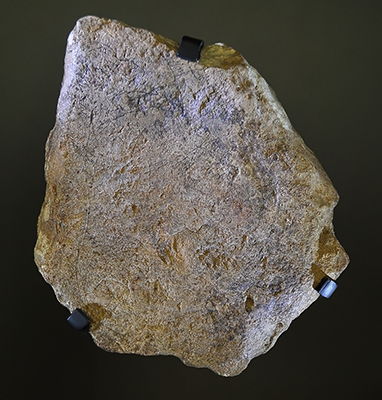
La Marche.
The theme of obese women is continued in this engraving.
Photo: http://www.poitou-charentes-vacances.com/Mon-voyage/A-visiter/Musee-de-Prehistoire-Grottes-de-la-Marche-et-des-Fadets
Source: Musee-de-Prehistoire-Grottes-de-la-Marche-et-des-Fadets

Drawing of the engraving above.
There are two figures which may be made out on this particular piece.
Photo: http://www.poitou-charentes-vacances.com/Mon-voyage/A-visiter/Musee-de-Prehistoire-Grottes-de-la-Marche-et-des-Fadets
Source: Musee-de-Prehistoire-Grottes-de-la-Marche-et-des-Fadets
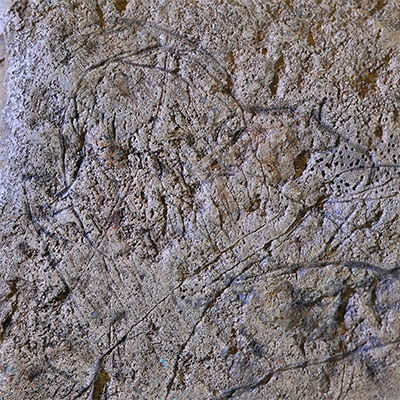
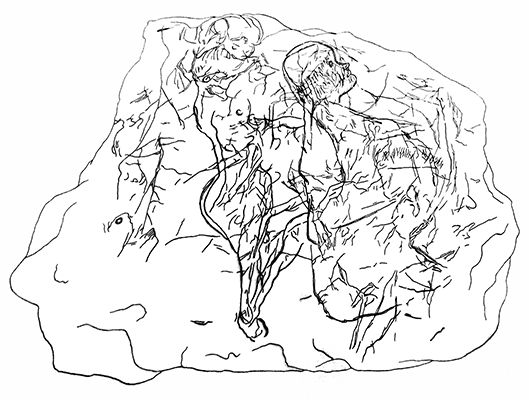
Engraved limestone slab from La Marche. The colour photo shows a close up of a woman with a cap over her hair.
The drawing is either of this engraving, or of one which is very similar.
Photo (left): https://www.facebook.com/museedeprehistoiredelussacleschateaux/
Photo (right): Ralph Frenken 2015
Source: Musee-de-Prehistoire-Grottes-de-la-Marche-et-des-Fadets
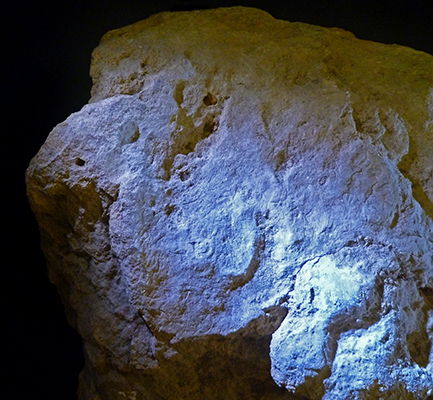
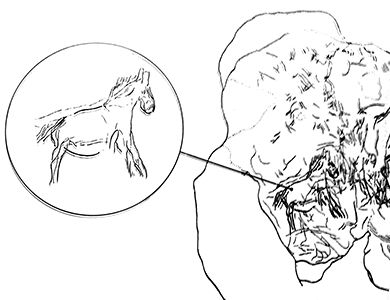
A block of limestone from La Marche engraved with many lines from which we can discern several animals.
At right is an 'asinien', a horse with donkey ears. (Onager? - Don ) His bent head is topped by a mane and long erect ears. His croup descends quickly, to a short and bushy tail.
Inverted on the stone, we can discern the body of a large animal with a head with a large muzzle, perhaps a reindeer.
Photo: Ralph Frenken 2015
Source and text: Musee-de-Prehistoire-Grottes-de-la-Marche-et-des-Fadets
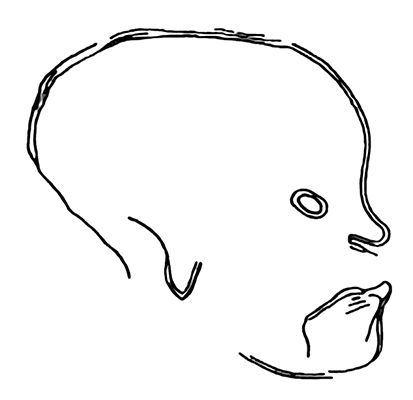
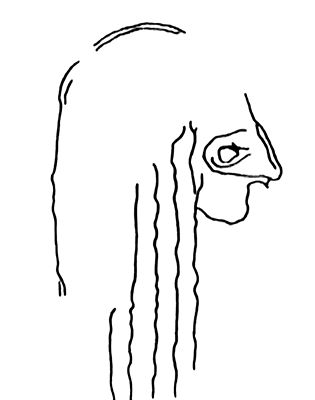
Drawings of the engravings from La Marche.
Photo: Ralph Frenken 2015
Source: Musee-de-Prehistoire-Grottes-de-la-Marche-et-des-Fadets
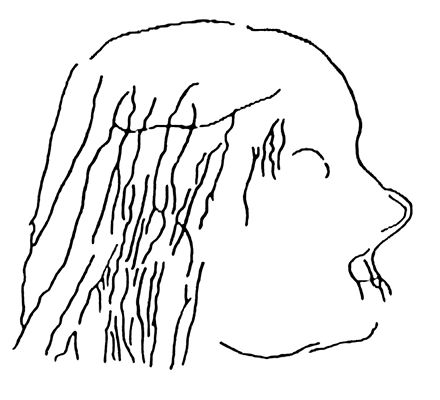
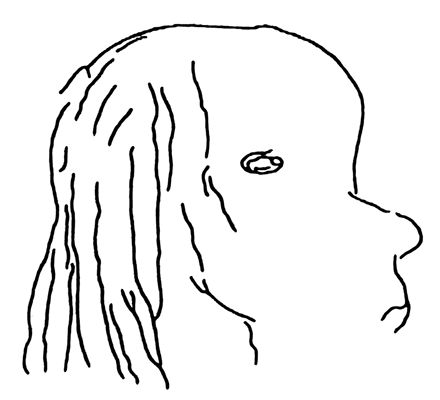
Drawings of the engravings from La Marche.
Photo: Ralph Frenken 2015
Source: Musee-de-Prehistoire-Grottes-de-la-Marche-et-des-Fadets
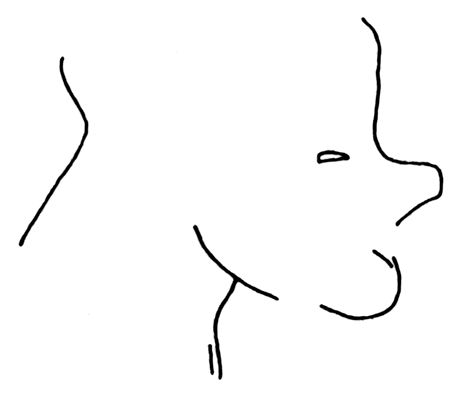
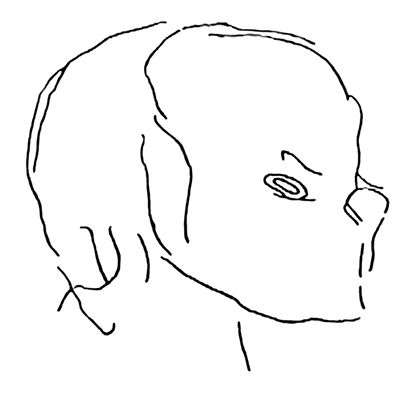
Drawings of the engravings from La Marche.
Photo: Ralph Frenken 2015
Source: Musee-de-Prehistoire-Grottes-de-la-Marche-et-des-Fadets
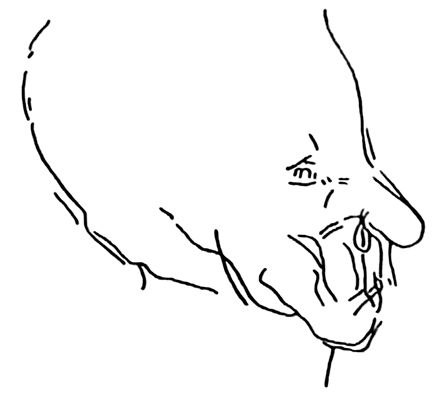

Drawings of the engravings from La Marche.
Photo: Ralph Frenken 2015
Source: Musee-de-Prehistoire-Grottes-de-la-Marche-et-des-Fadets

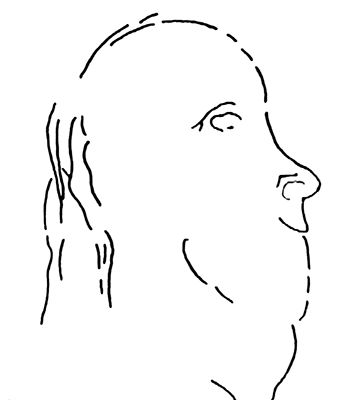
Drawings of the engravings from La Marche.
Photo: Ralph Frenken 2015
Source: Musee-de-Prehistoire-Grottes-de-la-Marche-et-des-Fadets
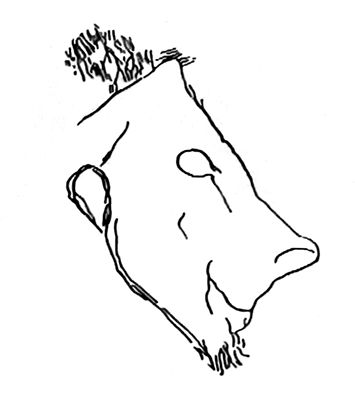

Drawings of the engravings from La Marche.
Photo: Ralph Frenken 2015
Source: Musee-de-Prehistoire-Grottes-de-la-Marche-et-des-Fadets

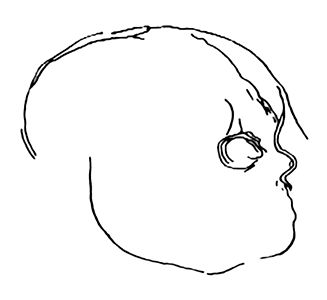
Drawings of the engravings from La Marche.
Photo: Ralph Frenken 2015
Source: Musee-de-Prehistoire-Grottes-de-la-Marche-et-des-Fadets

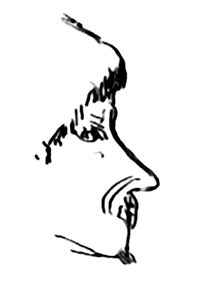
Drawings of the engravings from La Marche.
Photo: Ralph Frenken 2015
Source: Musee-de-Prehistoire-Grottes-de-la-Marche-et-des-Fadets


Drawings of the engravings from La Marche.
Photo: Ralph Frenken 2015
Source: Musee-de-Prehistoire-Grottes-de-la-Marche-et-des-Fadets

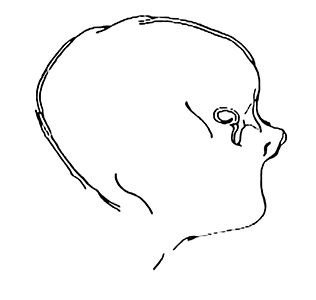
Drawings of the engravings from La Marche.
Photo: Ralph Frenken 2015
Source: Musee-de-Prehistoire-Grottes-de-la-Marche-et-des-Fadets
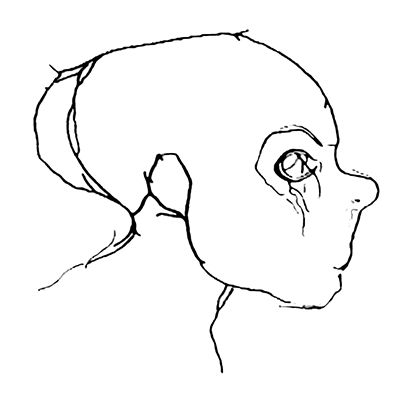
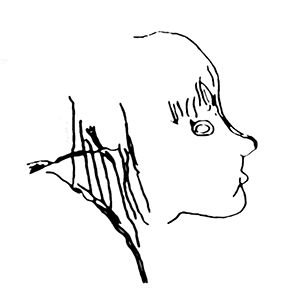
Drawings of the engravings from La Marche.
Photo: Ralph Frenken 2015
Source: Musee-de-Prehistoire-Grottes-de-la-Marche-et-des-Fadets

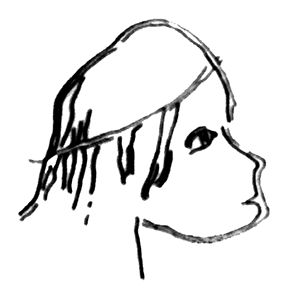
Drawings of the engravings from La Marche.
Photo: Ralph Frenken 2015
Source: Musee-de-Prehistoire-Grottes-de-la-Marche-et-des-Fadets
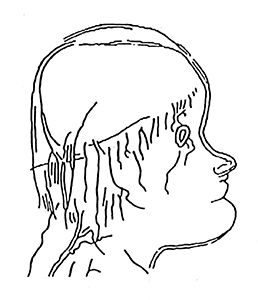
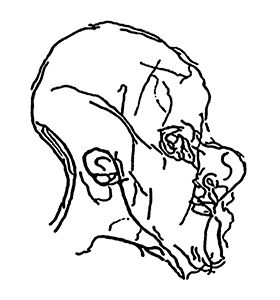
Drawings of the engravings from La Marche.
Photo: Ralph Frenken 2015
Source: Musee-de-Prehistoire-Grottes-de-la-Marche-et-des-Fadets

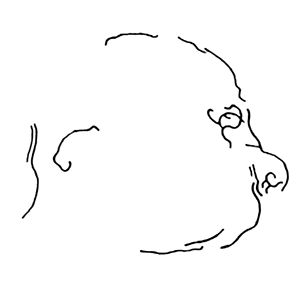
Drawings of the engravings from La Marche.
Photo: Ralph Frenken 2015
Source: Musee-de-Prehistoire-Grottes-de-la-Marche-et-des-Fadets
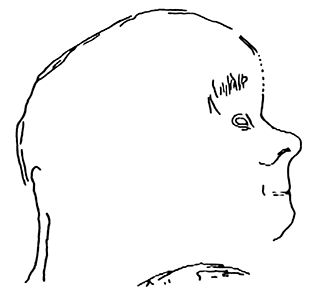

Drawings of the engravings from La Marche.
Photo: Ralph Frenken 2015
Source: Musee-de-Prehistoire-Grottes-de-la-Marche-et-des-Fadets
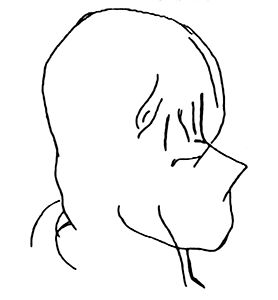

Drawings of the engravings from La Marche.
Photo: Ralph Frenken 2015
Source: Musee-de-Prehistoire-Grottes-de-la-Marche-et-des-Fadets
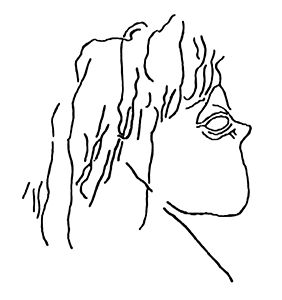

Drawings of the engravings from La Marche.
Photo: Ralph Frenken 2015
Source: Musee-de-Prehistoire-Grottes-de-la-Marche-et-des-Fadets

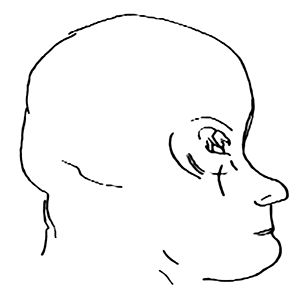
Drawings of the engravings from La Marche.
Photo: Ralph Frenken 2015
Source: Musee-de-Prehistoire-Grottes-de-la-Marche-et-des-Fadets
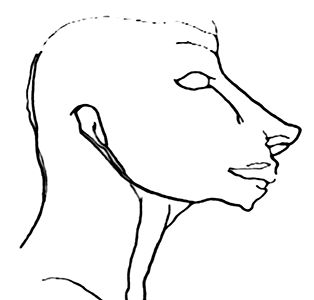

Drawings of the engravings from La Marche.
Photo: Ralph Frenken 2015
Source: Musee-de-Prehistoire-Grottes-de-la-Marche-et-des-Fadets
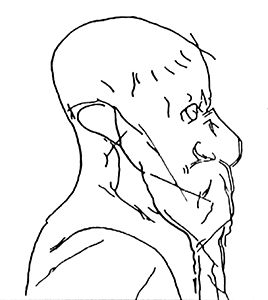
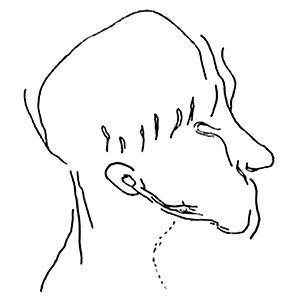
Drawings of the engravings from La Marche.
Photo: Ralph Frenken 2015
Source: Musee-de-Prehistoire-Grottes-de-la-Marche-et-des-Fadets

This is an incomplete trapezoidal limestone plate 100 x 80 x 5 mm thick, housed in the collections of the Musée de l’Homme, Laboratoire de Préhistoire, Lwoff collection (MH D-50-7-42) where I examined it, confirming the accuracy of the drawings of Dr. Pales. It is difficult to read, as is the case with the majority of human or animal representations of the cave, because of the tangle of lines.
Pales and Saint-Péreuse had first seen this figure as a male, before identifying it as a 'young child' with a semi-erect penis. Our reading is different: the supposed penis is wrongly placed, being inserted into the middle of the belly, and taking into account other elements, we interpret the drawing as that of a newborn child.
Our arguments are as follows:
- The volume of the head relative to the body.
- The presence of a double occipital brain outline, characteristic of a céphalématome, a temporary cranial swelling in a newborn (reported by Pales) which sometimes occurs during childbirth by compression, on a quite dilated and rigid neck.
- The flexed attitude of the lower limbs.
- the presence, as an overlay, of the image of a woman with a large abdomen and nursing breasts.
This piece illustrates the diversity of human subjects reproduced, with more women than men, more adult subjects than children and a significant number of women with big bellies and big breasts, presumably pregnant. This series of La Marche, little known or even unknown to the media, is an invaluable source of information about Magdalenian society.
Photo and text: http://www.atramenta.net/lire/oeuvre23919-chapitre120122.html
Permission: Creative Commons by-nc-nd 3.0
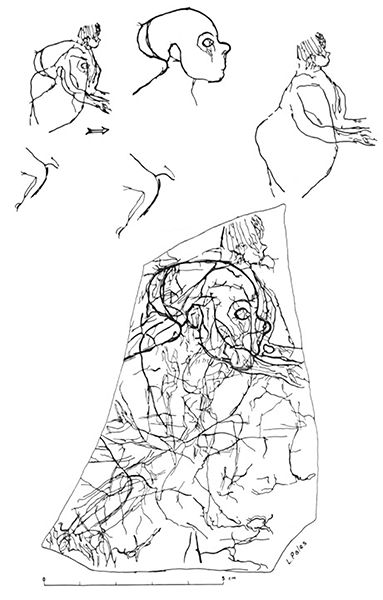
Drawing of the block above.
Photo: L. Pales
Source: Pales (1969)
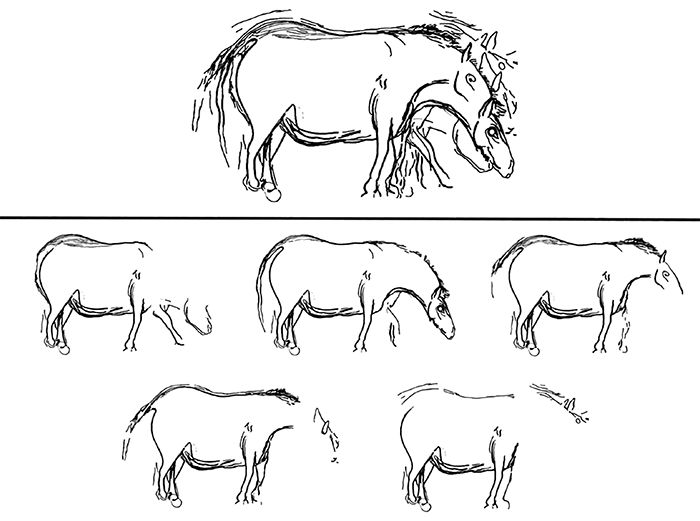
La Marche horse.
Split-action movement by superimposition of successive images of a horse at La Marche (Vienne).
Photo: L. Pales
Source: Pales et Tassin de Saint-Pereuse (1981)

Incised horse tooth from la Marche. These engravings may be interpreted as outlining a pubis or vulva.
At la Marche the Middle Magdalenian has thrown up many horse incisors engraved on the lingual surface, specifically the median combination of occlusal and lingual surfaces. The etching forms a triangle or a quadrangle filled with crossed lines of extreme delicacy. This figure, combined with the natural tooth morphology, undoubtedly symbolises the female sex. These teeth are never pierced, and are not likely to be considered as elements of adornment.
Photo and text: Airvaux (2001)
There is a similar example in the Musée d'Archéologie Nationale et Domaine, St-Germain-en-Laye, with catalog number MAN86628-144

Incisors of horses whose decoration includes cross hatching within a triangle.
A total of 22 foal incisors were studied, of which 18 are from the collection of St. Mathurin , kept at the Musée d'Archéologie Nationale (MAN) and 4 from the excavations of Lucien Rousseau.
Within this series, 20 have etchings on the lingual (touching the tongue) surface of the tooth, engravings whose graphic units break down into 12 triangles, 7 trapezoids and a figure composed of two parallel lines. 7 of these pieces also have incisions, more or less deep, variable in number, located on the edges of the tooth.
The two pieces completing the series have incisions only on the side edges. The labial (touching the lips or cheek) surfaces show no engraving.
Photo: © NMR, ill. Thierry Ollivier
Source and translated text: http://www.catalogue-roc-aux-sorciers.fr/html/12/collection/2_4_3.html
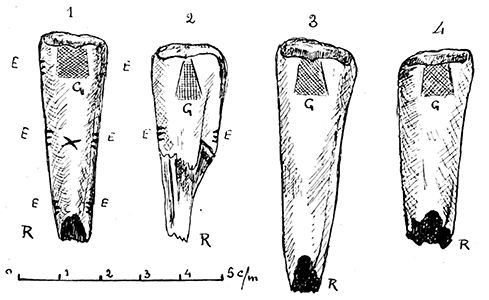
Engraved horse teeth from Dousse, Angles-sur-l'Anglin (Vienne).
The fauna of this deposit include a large number of horse bones, which in this site seems to be as abundant as reindeer. The teeth of the horses are frequently encountered side by side with fragments of jaws, all in excellent conservation. Of these teeth, mostly the incisors, that belonged to subjects of all ages, I collected five that deserve special description for their peculiarities. These five teeth, indeed, have been the subject of engravings that it is important to describe carefully, since their particular modification, to my knowledge, has not been reported yet. These teeth are incisors, young animals with no wear of the dental table.
In the concave portion of each tooth in exactly the same spot for the five specimens collected, that is to say on the part projecting from the gum during the lifetime of the animal, is a very fine checkerboard grid, very clear and registered in an isosceles triangle for two of the teeth, and in a trapezoid for the other three. The grid is clearly bounded by a straight line, and the interior is filled with a series of engraved lines consisting of intersecting diagonals and forming tiny squares. Two of the incisors, where the grid is more carefully and neatly done, additionally carry particular signs, which consist of lateral notches distributed in groups of three on a single tooth, a total of 18 notches as a result of their spacing of three groups of three on each side, while the concave portion of the tooth, in the greater curvature below the grid, is engraved with two slots intersecting diagonally and forming a cross of Saint Andrew. ( No. 1 in the drawing).
The second example has only six notches, three on each side, symmetrically arranged on both sides of the tooth. This tooth has the remaining part of the root formerly broken and could have had other notches in the missing part. How were these engravings made in enamel, on such a very hard material, and what is their significance? A test with a flint blade, from the site, on another horse incisor made me realise the hardness of enamel, and the difficulty of executing this work, given the rapid crumbling of the cutting edge of the flint.
Perhaps, the two pieces of rock crystal found provided thin blades, stronger than flint and able to perform these engravings, on which one can admire the regularity of the lines, on such a hard material. It is difficult to comment on the reason for these engravings and their use; hunting trophies, perhaps? Pendants? Their suspension would have been difficult, especially for three copies which carry no notch. Perhaps, is this a fetish, a charm to ensure success in hunting for their happy owner, and provided by a skilful clan sorcerer? So many questions arise, which are, I think, very difficult to resolve, but which are no less likely to attract the attention of prehistory.
Photo and text: Rousseau (1933)
References
- Airvaux, J., Pradel L., 1984: Gravure d'une tête humaine de face dans le Magdalénien III de la Marche, commune de Lussac-les-Châteaux (Vienne)Bulletin de la Société préhistorique française, tome 81, n°7, 1984. pp. 212-215.
- Airvaux, J., 2001: L'art préhistorique du Poitou-Charentes, sculptures et gravures des temps glaciaires, la maison des roches éditeur, 223 p., 188 fig.
- Gobillot L., 1919: Note sur deux Pendeloques magdaléniennes inédites de la Vienne, Bulletin de la Société préhistorique de France, 1919, tome 16, N. 4. pp. 192-195.
- Lwoff, S., 1941: Gravures à représentations d'humains du Magdalénien III. Fouilles de La Marche, commune de Lussacles- Châteaux (Vienne), Bulletin de la Société préhistorique de France, ttome 38, n°7-8, 1941. pp. 145-161.
- Pales, L., 1969: Les gravures de La Marche. III: Humains. 2., Bordeaux: Imprimeries Delmas, 1969.
- Pales, L., Tassin de Saint-Pereuse, M., 1981: Les gravures de La Marche. III: equidés et bovidés, Paris: Ophrys.
- Péricard, L., Lwoff, S., 1940: La Marche, commune de Lussac-les-Châteaux (Vienne): Premier atelier de Magdalénien III à dalles gravées mobiles (campagnes de fouilles 1937-1938), Bulletin de la Société préhistorique deFrance,tome 37, n°7-9, 1940. pp. 155-180.
- Rousseau, L., 1933: Le Magdalénien dans la Vienne. Découverte et fouille d'un gisement du Magdalénien à Angles-sur l'Anglin (Vienne), Bulletin de la Société préhistorique de France, tome 30, n°4, 1933. pp. 239-256.
